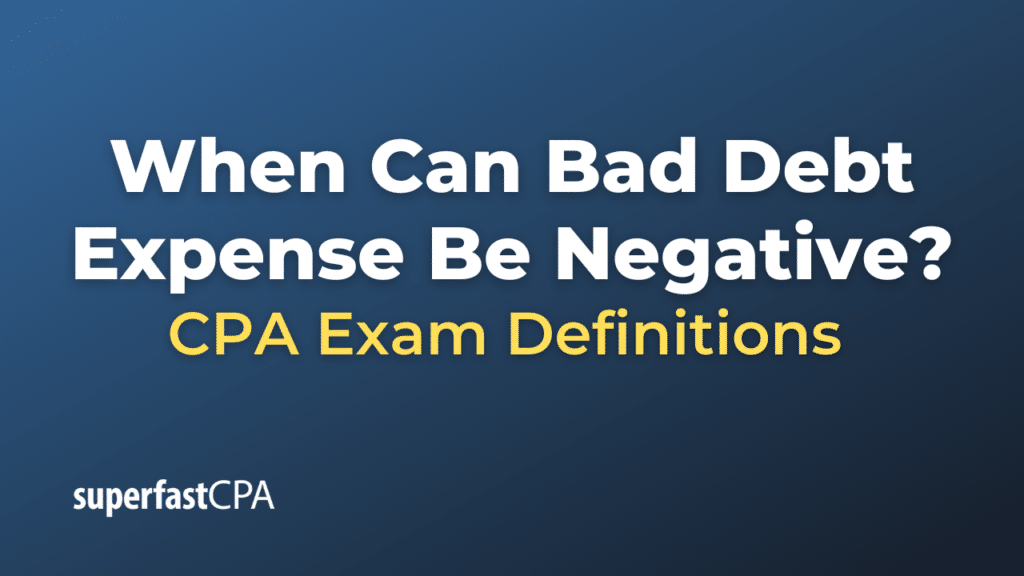When Can Bad Debt Expense Be Negative
In accounting, Bad Debt Expense is usually considered a cost that arises from accounts receivable that are unlikely to be collected. However, there are rare situations where you might record a “negative” Bad Debt Expense. This would effectively mean that you are reducing the Bad Debt Expense account, usually due to the recovery of accounts that were previously deemed uncollectible.
Reasons for Negative Bad Debt Expense:
- Recovery of Bad Debts: If a customer pays off an amount that had previously been written off as a bad debt, it could result in a negative Bad Debt Expense for that accounting period.
- Adjustment: If you initially overestimated the amount of bad debt for a period, a subsequent adjustment could result in a negative balance in the Bad Debt Expense for that period.
- Change in Accounting Estimates: If you used an allowance method based on a percentage of sales or accounts receivable, and you later determine that the risk of bad debt is lower than originally estimated, a negative Bad Debt Expense could be recorded to adjust the allowance account.
It’s important to note that negative Bad Debt Expense is generally not a “normal” or “typical” situation. It’s more of an adjustment or correction rather than a standard accounting practice. Always consult with accounting professionals or experts when dealing with such situations to ensure that you’re complying with generally accepted accounting principles (GAAP) or other relevant accounting standards.
Example of When Can Bad Debt Expense Be Negative
Let’s use a simplified example to illustrate how a Bad Debt Expense can be negative due to the recovery of an account that was previously deemed uncollectible.
Background
Suppose that ABC Corp, a wholesaler of electronic parts, had previously written off an account receivable of $5,000 from XYZ Tech during the last fiscal year because it was considered uncollectible.
The journal entry last year would have been:
- Initial Write-Off (Last Year):
Dr: Bad Debt Expense $5,000
Cr: Accounts Receivable $5,000
Current Year Events
This year, XYZ Tech unexpectedly comes back into business and pays off the $5,000 that was previously written off. ABC Corp would then make the following entries:
- Recover the Written-Off Account (This Year):
Dr: Accounts Receivable $5,000
Cr: Allowance for Doubtful Accounts $5,000 - Record the Cash Receipt (This Year):
Dr: Cash $5,000
Cr: Accounts Receivable $5,000
Now, ABC Corp would want to adjust its Bad Debt Expense to reflect the recovery.
- Adjust the Bad Debt Expense (This Year):
Dr: Allowance for Doubtful Accounts $5,000
Cr: Bad Debt Expense $5,000
Result
The last journal entry effectively makes the Bad Debt Expense “negative” by $5,000 for the current fiscal year, assuming no other bad debts. If there were other bad debts, this would reduce the total Bad Debt Expense for the current period.
This isn’t typical in the regular course of business and would usually be treated as an unusual item when analyzing financial statements. It shows that previous estimates of uncollectible accounts were too high and have now been adjusted downward. Accounting standards generally require that such adjustments be explained in the notes to the financial statements.













